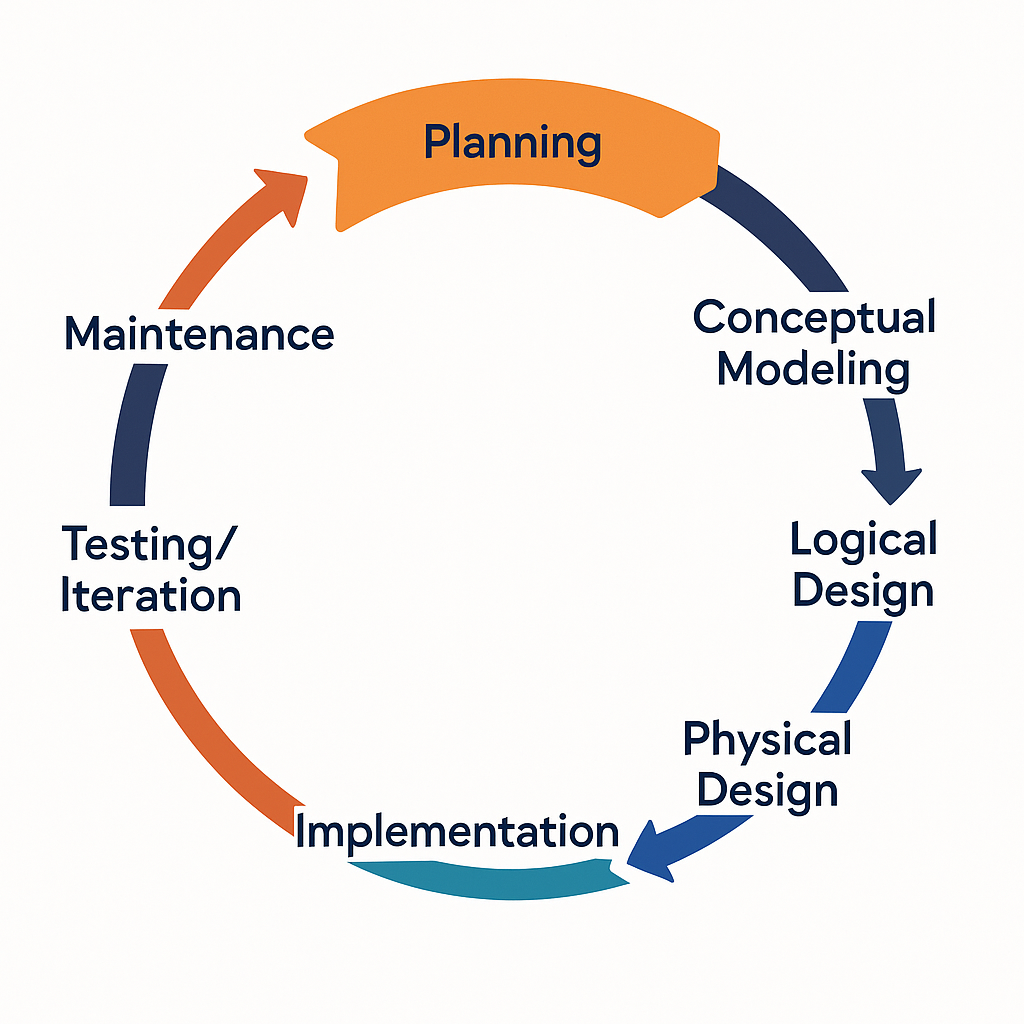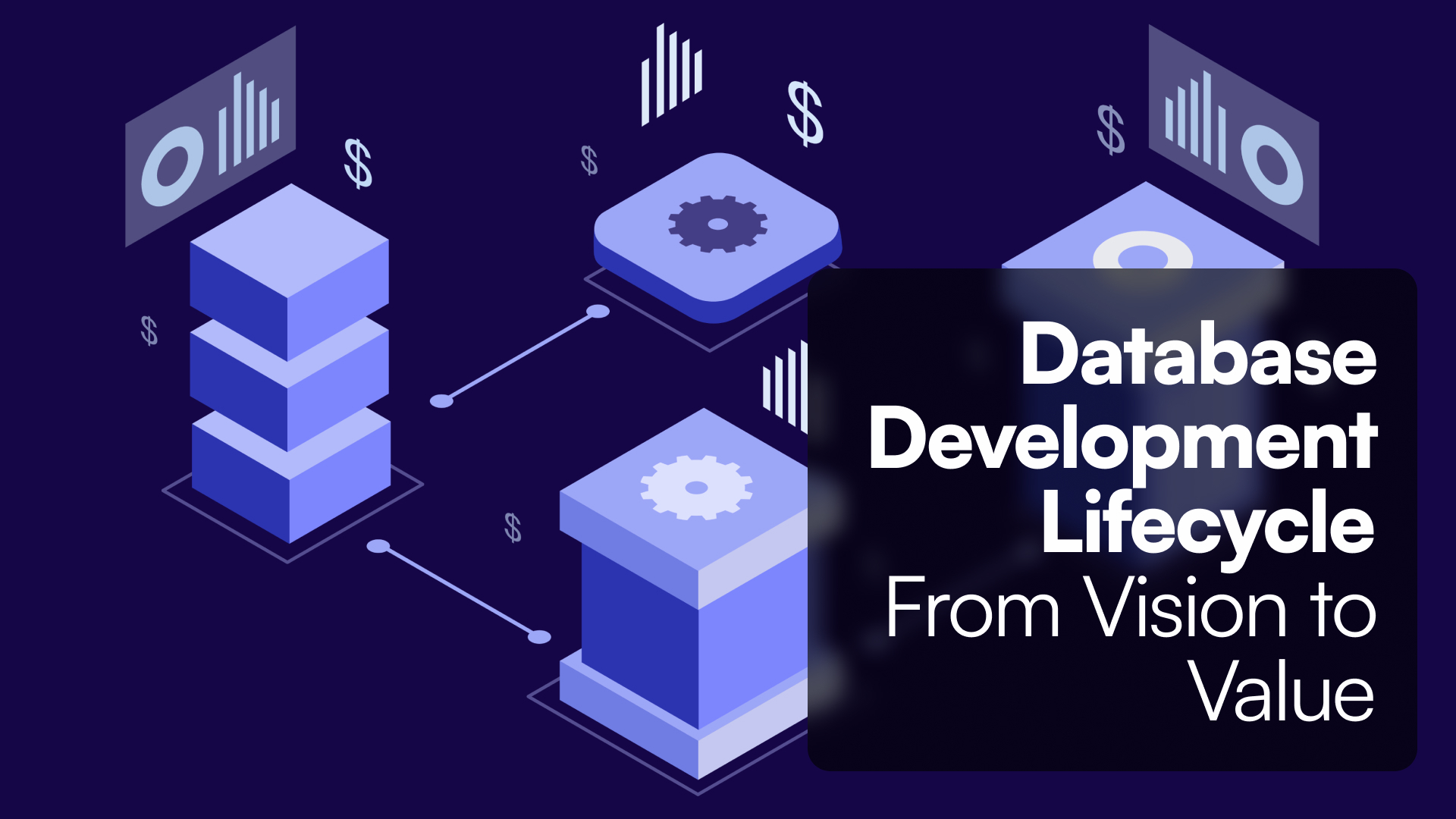Introduction
You don’t just need a place to store data. You need a database that fits your business's real-world workflows, compliance needs, and evolving goals. Database development is the structured approach to building that kind of system—translating business purpose into a stable, scalable data infrastructure.
This guide breaks down the complete lifecycle of database development—from requirements to maintenance—in a way that’s both strategic and actionable. Whether you’re building from scratch or evolving an existing system, use this as a reference point for designing smarter and scaling cleaner. We’ll also highlight how platforms like Tadabase simplify and accelerate this entire process.
Planning: Clarify why and what
Database projects fail most often because they rush past this phase. Skip it, and you’ll end up retrofitting fixes later. The planning phase is where you ask the right questions:
-
What specific problems will this database solve?
-
What kinds of data are involved (structured, unstructured, sensitive)?
-
Who are the users, and what are their access levels?
-
What compliance requirements must be met (e.g., HIPAA)?
-
What tools, systems, or APIs must it connect with?
Real tip: Write out success metrics like "Enable finance team to generate reports in under 5 minutes" or "Allow for real-time sync with eCommerce backend."
Analysis and conceptual modeling
Here, you capture the essential data relationships without committing to technical detail. This is your database blueprint.
-
Use Entity Relationship Diagrams (ERDs) to define entities (like Customers, Orders, Invoices) and their relationships.
-
Document business rules around each (e.g., "A Customer can have many Orders").
Caution: Most ERDs never survive real-world complexity unchanged. That's why evolutionary database design matters: start simple, and evolve it.
Helpful read: Essential database terms for beginners
Logical and physical design
Now it’s time to add structure:
Logical design
-
Normalize your data (3NF or higher where it makes sense)
-
Map relationships between tables
-
Define indexes, views, and constraints
Physical design
-
Choose a database type: relational (SQL) or non-relational (NoSQL)
-
Create table structures, primary/foreign keys, indexing strategy
-
Decide on storage needs, access patterns, and optimization techniques
Note: Over-normalization can kill performance. Design for how the database will actually be queried.
Platform tip: Tadabase abstracts much of the physical layer, allowing creators to focus on logic and workflows.
Implementation and loading
You’re ready to build:
-
Generate schema using SQL or your platform of choice
-
Write initial migrations (with versioning!)
-
Populate with test or production data
-
Automate permissions and roles
Use staging environments for safe testing. Never push direct changes into production without a rollback plan.
Agile practice: Evolve your schema incrementally. Add a new column? Write a migration, test it, deploy with monitoring.
Testing, deployment, and iteration
Database testing isn’t optional. At this stage, validate:
-
Query speed and performance under load
-
Data integrity constraints
-
Role-based access controls
-
Backup and recovery scenarios
Once tested, deploy your system and start collecting user feedback. Monitor queries, log errors, and measure performance. Be ready to iterate.
Tip: Schema changes should follow version control practices just like application code.
Maintenance and scaling
Databases degrade without maintenance. Schedule time for:
-
Index review and tuning
-
Schema refactoring
-
Data archiving
-
Monitoring for anomalies
Use proactive alerts for slow queries, failed writes, or replication lag. Don't wait for customers to notice.
Related resource: Database management system
Tools for database development
Here are popular tools developers use across the lifecycle:
-
ER modeling: dbdiagram.io, Lucidchart, dbdesigner.net
-
Development IDEs: DBeaver, DataGrip, Azure Data Studio
-
Schema versioning: Flyway, Liquibase, Alembic
-
Testing: Postman (for API-backed DBs), SQLTest
-
No-code builders: Tadabase — allows you to build structured apps with workflows and role-based access without writing code.
Comparison note: Unlike traditional IDEs, Tadabase combines schema, app logic, permissions, and UI—all in one platform.
For more insights: What is a database application
Why this process matters for your business
An effective database isn’t just efficient—it supports decisions, integrates teams, and reduces friction. Done well, it becomes your company’s operational foundation. Done poorly, it creates bottlenecks and risk.
If your data infrastructure is:
-
Slowing down new features
-
Requiring redundant manual entry
-
Making reporting difficult
-
Or growing without structure
... it’s time to re-evaluate your database design.
See how Tadabase enables custom, no-code database development tailored to business needs.
Quick agile database checklist
Use this checklist to ensure your database development process remains iterative, testable, and change-resilient:
-
Define a success metric for each dataset (e.g., "Query completes under 1s")
-
Build your first ERD, then expect it to evolve as business logic changes
-
Apply schema changes using tracked migration files (with timestamps and rollback)
-
Run migration tests in staging before production rollout
-
Set up monitoring tools for slow queries and schema drift
-
Log and review schema changes monthly (not just application code)
-
Use a sandbox or clone environment for experiments and training
-
Automate backups and test restore processes quarterly
-
Review indexes and performance quarterly based on query logs
-
Align schema changes with versioned app updates
Lifecycle diagram

Frequently asked questions
What’s the difference between a database and a spreadsheet?
Spreadsheets are manual and error-prone. Databases are structured, searchable, and built for scale. See: Database vs Spreadsheet
Can I build a database without writing code?
Yes. Tools like Tadabase let you design databases and build applications with drag-and-drop interfaces.
What is the best database for beginners?
It depends on your goals. For learning, SQLite or PostgreSQL are popular. For launching an app fast, Tadabase offers a beginner-friendly start.
How do I know if I need to rebuild my current database?
If reporting is painful, data entry is manual, or schema changes require major rework, it’s likely time to re-architect.
Which database is better—SQL or NoSQL?
Use SQL when relationships and data integrity are essential. NoSQL fits when you need high-speed, flexible structures like JSON or unstructured logs.
How often should I update my database schema?
Only when business logic changes or performance demands it. Use version-controlled migrations and always test in staging first.
What’s the best way to handle user roles and permissions?
Use row-level access controls and structured user groups. Tadabase allows you to assign role-based visibility natively.
Is Tadabase secure for sensitive data?
Yes. It supports encryption, role-based access, audit trails, and offers HIPAA-compliant setups for regulated industries.
Can I migrate from Excel or Google Sheets to Tadabase?
Easily. Tadabase lets you import spreadsheets and convert them into structured, interactive database applications.
Conclusion
Database development is not a set-it-and-forget-it project. It’s an ongoing conversation between business objectives and structured data. Whether you’re optimizing an existing system or starting from scratch, use this lifecycle to stay aligned, efficient, and ready for growth.
With Tadabase, your backend becomes more than just a data store—it becomes a business enabler.
Explore Tadabase’s cloud database solutions or build your own online database today.








